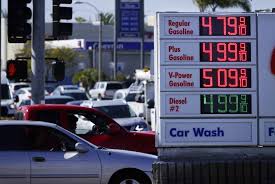
For a multitude of reasons, gas prices are increasing in the United States. Oil and gas production is still recovering from the pandemic slowdown, the specter of inflation looms large, and the Russian invasion of Ukraine (and subsequent economic sanctions of Russia) have all placed upward pressure on gas prices. This affects the foodservice industry in a number of ways.
Higher Input Costs
Ingredients, food products, and packaging will all likely cost you more money, because transportation prices have increased. Even the most localized, farm-to-table restaurant will still need gasoline-powered transportation for their supplies to arrive at their restaurant. Large companies with global supply chains will be even more impacted.
In addition, your staff members will likely require higher compensation. Higher gas prices also affect their bottom line, and they cannot lose money just commuting to and from their work shift.
Substitution
Higher gas prices also affect customers’ household budgets. When their budgets are strained, they are more likely to seek out substitute goods. Your customers will always buy groceries and gasoline, so if their gasoline costs increase, they will reduce “optional” food purchases (i.e., from foodservice providers) in favor of “required” food purchases (i.e., groceries).
With the increase in work from home and hybrid work environments, it is possible that gasoline prices will not affect consumers as much in the post-COVID world as it would have prior to the pandemic. Since many customers are avoiding the daily commute, they could have more cushion in their budget than they would have in 2019. The International Energy Agency, however, projects that demand for gasoline will exceed pre-pandemic levels this year. Like so many other aspects of the economy in the past 3 years, it is difficult to predict how historic consumer behavior will map on to present realities, but foodservice providers should monitor demand to see if they substitute eating out with eating in.
Delivery Fees
The pandemic drove more and more consumers to order delivery for food in all dining categories, as well as from grocery stores and convenience stores. In addition, companies like DoorDash and Uber expanded their offerings to capitalize on this trend. While consumers may continue wanting to eat restaurant food in spite of higher gasoline prices, delivery drivers may require higher payments to deliver those products. This could result in higher delivery fees charged to restaurants (thus impacting their profit margins) or to customers (potentially reducing overall demand for delivery).
The Cornell Center for Hospitality Research published a key piece of research regarding consumer behavior and delivery fees. At a high level, they found that consumers are willing to pay for delivery fees, and are willing to use a restaurant’s internal delivery system when they learn that third party platforms charge high fees to restaurants. There are key nuances to how your company frames these fees and behaviors, so be thoughtful and careful in how you approach this topic.
The Bottom Line
Gasoline can impact foodservice providers through higher input costs, product substitution, and higher delivery fees. Whether the exact responses map onto pre-2020 behavior patterns, however, remains to be seen. It is clear that the flexibility and resilience that many providers developed during the pandemic will still be required as we face whatever realities follow.
Tim Powell is a Managing Principal of Foodservice IP. Tim serves as a trusted foodservice adviser to management at several food companies.
Like the content? Sign up to receive our communications.
Recent Comments